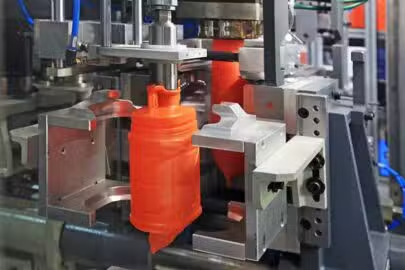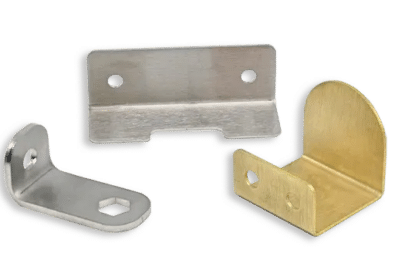Injection molding is a versatile manufacturing process used to create high-quality plastic components. In scenarios where large production volumes are required, multi-cavity molds become a game-changer. These molds allow manufacturers to produce multiple parts simultaneously, significantly increasing efficiency and reducing costs per unit.
However, designing multi-cavity molds requires careful consideration to ensure consistent part quality and optimal production performance. This article explores the design principles, benefits, and critical factors to consider when creating multi-cavity molds for injection molding.
Designing Multi-Cavity Molds for Injection Molding
Multi-cavity molds are specialized tools that house multiple cavities, each replicating the geometry of the desired part. Instead of producing one part per injection cycle, these molds produce several parts in parallel, dramatically boosting productivity.
Key steps in designing multi-cavity molds include:
Analyzing Part Design
Analyzing the part design is a foundational step in creating multi-cavity molds. This process ensures the part is moldable and suitable for high-volume production. Designers must assess the geometry for potential challenges, such as undercuts, sharp edges, or thin walls, which can complicate mold manufacturing or filling. Material selection is equally important; properties like shrinkage, thermal expansion, and flow behavior impact injection molding mold performance. Prototyping or simulation tools can help identify design flaws early, allowing adjustments to ensure consistent cavity replication and efficient mold operation.

Choosing the Right Mold Base
The mold base serves as the structural foundation for the multi-cavity mold, so choosing the right one is critical. It must provide sufficient support to withstand the injection pressure exerted during production. Mold bases should be made from durable materials, such as hardened steel, to resist wear over repeated cycles. Designers must consider the size and layout of cavities to ensure the base accommodates them without unnecessary bulk. Additionally, compatibility with cooling channels and ejection mechanisms ensures seamless integration and optimal performance.
Optimizing Cavity Layout
Optimizing cavity layout is essential for efficient material flow and mold performance. Cavities should be arranged symmetrically to reduce imbalances during the injection process. Designers often use a layout that minimizes the mold’s overall size while ensuring equal spacing between cavities to distribute mechanical stress evenly. The orientation of each cavity must also be considered to prevent weld lines, warping, or other defects. Advanced CAD software and flow simulations can help achieve a layout that balances performance, material efficiency, and cost-effectiveness.
Designing the Runner System
The runner system acts as the pathway for molten material to flow from the injection unit to the cavities. Designing an efficient runner system is crucial for uniform filling across all cavities. The system should minimize material waste and pressure loss while ensuring balanced flow. Designers typically use a hot or cold runner system, depending on the application. Hot runners reduce material wastage but require precise temperature control, while cold runners are simpler and cost-effective. Properly sized and positioned runners prevent defects and enhance part quality.
Ensuring Proper Venting and Cooling
Proper venting and cooling are essential to maintain consistent part quality and efficient cycle times. Venting allows trapped air or gas to escape during injection, preventing defects like burn marks or incomplete fills. Cooling channels must be strategically placed to ensure even temperature distribution across all cavities. This prevents warping, shrinkage, and prolonged cooling times. Using advanced techniques, such as conformal cooling, further enhances heat dissipation. Regular maintenance of vents and cooling systems is vital to avoid blockages and ensure optimal mold performance over time.
Benefits of Multi-Cavity Molds in High-Volume Production
Using multi-cavity molds offers several advantages, particularly in high-volume manufacturing:

Increased Productivity
One of the most significant advantages of multi-cavity molds is their ability to increase productivity. By producing multiple parts in a single injection cycle, injection molding service can dramatically shorten production times. This efficiency is particularly valuable in high-volume manufacturing, where meeting tight deadlines is crucial. Faster cycle times mean machines can complete more orders in less time, leading to higher throughput and the ability to take on additional projects without requiring extra equipment.
Lower Cost per Part
Multi-cavity molds reduce the cost per part by spreading fixed expenses, such as mold fabrication and setup costs, over a larger number of parts. Producing multiple components simultaneously also lowers energy consumption per unit, as the same injection process is used to create multiple parts. Over time, this efficiency significantly reduces production costs, making it an economical choice for manufacturers seeking to maximize profit margins without compromising quality.
Enhanced Consistency
Multi-cavity molds ensure that each part produced is virtually identical, promoting uniformity across high-volume production runs. This consistency is critical in industries like medical devices and automotive manufacturing, where precise specifications are essential. A well-designed multi-cavity mold eliminates variations caused by material flow, pressure, or cooling disparities, maintaining strict quality standards. Consistent parts reduce the risk of rework or rejection, saving both time and resources while boosting customer satisfaction.
Efficient Use of Resources
Multi-cavity molds enable manufacturers to optimize their resources, including materials, energy, and machine time. Producing multiple parts simultaneously reduces waste associated with single-cavity molds, as less material is lost in sprues and runners per part. Additionally, fewer machine cycles are needed, resulting in lower energy consumption and wear on equipment. This efficient use of resources not only reduces production costs but also supports sustainable manufacturing practices by minimizing environmental impact.
Factors to Consider When Designing Multi-Cavity Molds
Designing multi-cavity molds involves addressing several critical factors:
Material Selection
Choosing the right material for the mold is critical for durability and performance. Mold materials like hardened steel or high-grade aluminum must withstand the high pressures, temperatures, and repetitive cycles of injection molding without deforming or wearing out. Additionally, the mold material should resist corrosion caused by certain polymers or additives. The choice also depends on the application; for high-volume production, hardened steel is preferred, while aluminum is suitable for prototyping or short runs. Proper material selection ensures long-lasting molds and consistent part quality.
Cavity Placement
Cavity placement plays a vital role in the efficiency and balance of the injection molding process. Evenly spaced cavities ensure that material flow, pressure distribution, and cooling are uniform, reducing defects like warping or incomplete fills. Designers must consider the mold’s overall size and mechanical stability while optimizing cavity placement to minimize stress. Proper placement also helps in balancing the runner system and maintaining consistent cycle times. Advanced simulations and CAD tools aid in determining the ideal arrangement for maximum productivity and quality.
Gate Design
The gate is the entry point for molten material into the mold cavity, and its design directly impacts part quality. The type, size, and placement of the gate influence the flow rate, pressure distribution, and cooling of the material. For multi-cavity molds, balanced gating systems, such as hot runners or manifold systems, ensure even distribution to all cavities. Choosing the right gate type (e.g., edge, pin, or submarine gate) depends on the part geometry and material. Proper gate design minimizes defects like flash, sink marks, or flow lines.
Cooling System Efficiency
An efficient cooling system is essential to maintain uniform part quality and reduce cycle times. Properly designed cooling channels help evenly dissipate heat, preventing issues like warping, sink marks, or inconsistent shrinkage. Cooling systems should be placed as close as possible to the mold cavity without compromising the mold’s structural integrity. Advanced techniques, such as conformal cooling using 3D-printed channels, enhance heat transfer efficiency. Optimizing cooling reduces production times and energy consumption, improving overall manufacturing efficiency and output.
Ejection Mechanism
The ejection mechanism removes molded parts from the cavities without damaging them or causing deformation. Ejector pins, plates, or sleeves are commonly used and must be strategically placed to apply even force during part release. The mechanism should be designed to accommodate the part’s geometry, minimizing the risk of sticking or tearing. For high-volume production, automated ejection systems enhance efficiency by reducing cycle times and operator involvement. A well-designed ejection system ensures smooth part removal, maintaining quality and preventing production delays.
Balancing Material Flow Across Multiple Cavities
One of the most challenging aspects of multi-cavity mold design is achieving balanced material flow. Uneven flow can result in inconsistent part dimensions, defects, or sink marks. To address this:

Use Flow Analysis Software
Flow analysis software, such as mold flow simulation tools, helps predict how molten material will move through the runner system and cavities. These tools identify potential imbalances, areas prone to defects, or uneven filling. By using simulations during the design phase, manufacturers can optimize the mold layout, runner geometry, and gating system to ensure consistent material distribution. Early detection of design flaws reduces trial-and-error cycles, saving time, costs, and materials while improving the overall performance of the multi-cavity mold.
Design Symmetrical Runners
Symmetrical runners are crucial for ensuring equal material flow to all cavities in a multi-cavity mold. A well-balanced runner system minimizes variations in pressure and temperature, which can lead to defects like uneven fills or inconsistent part quality. Symmetry in runner design eliminates flow imbalances, ensuring all cavities fill simultaneously. Additionally, symmetrical runners simplify the mold design process and enhance overall production efficiency by reducing waste and improving cycle times in high-volume manufacturing environments.
Incorporate Balanced Gates
Balanced gates ensure that molten material reaches all cavities at the same time and under equal pressure. Proper gate placement and uniform sizing help prevent overfilling, short shots, or defects like sink marks. Designers often use techniques such as sequential gating or hot runner systems to achieve balance. This precision is critical in multi-cavity molds, where discrepancies between gates can lead to inconsistent part dimensions. Balanced gates improve quality control, reduce material wastage, and streamline the production process.
Account for Pressure Drop
Pressure drop refers to the reduction in pressure as molten material flows through the runner system and into the cavities. In multi-cavity molds, uneven pressure drops can result in incomplete fills or quality inconsistencies. Designers must account for this by optimizing runner lengths, cross-sectional areas, and gate placement. Using flow analysis software helps identify areas of high resistance and adjust the design accordingly. Properly addressing pressure drops ensures smooth filling, consistent part dimensions, and defect-free production in multi-cavity molds.
Applications Requiring Multi-Cavity Mold Designs
Multi-cavity molds are widely used across various industries. The applications highlight the importance of multi-cavity molds in meeting the demands of mass production while ensuring cost-effectiveness and quality. Some of the industries include:
- Consumer Goods: High-volume production of household items like containers, lids, and utensils.
- Medical Devices: Manufacturing precision parts such as syringes and surgical components.
- Automotive Industry: Producing connectors, clips, and small plastic parts for vehicles.
- Electronics: Creating housings and components for electronic devices.
Conclusion
Designing multi-cavity molds for injection molding is both an art and a science. It requires meticulous planning, attention to detail, and expertise in mold design principles. By understanding the factors influencing multi-cavity mold performance and balancing material flow, manufacturers can maximize productivity, reduce costs, and maintain high-quality standards.
Great, Together



